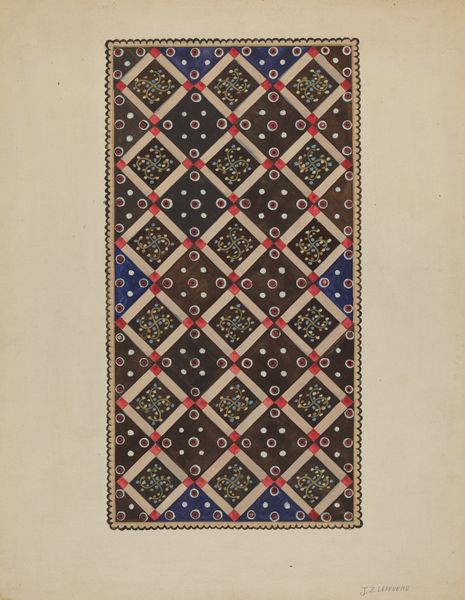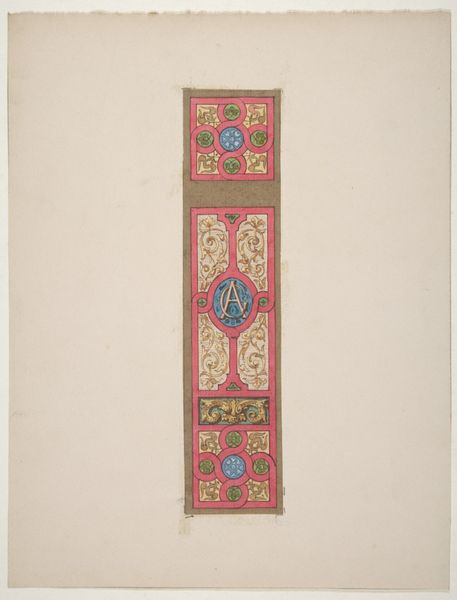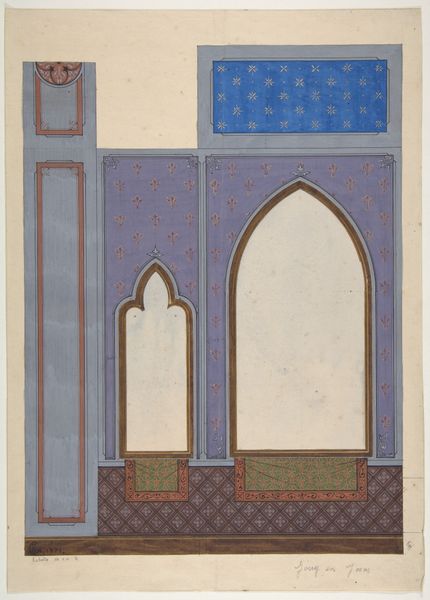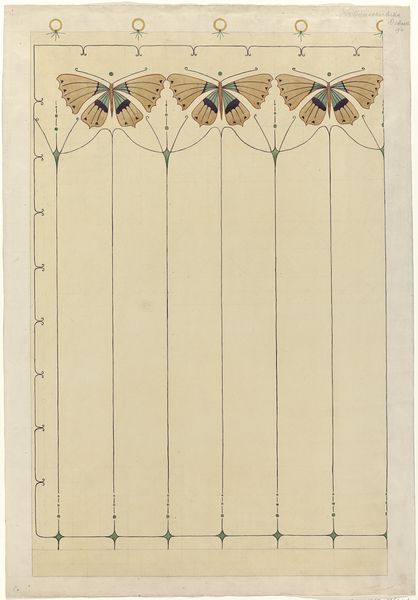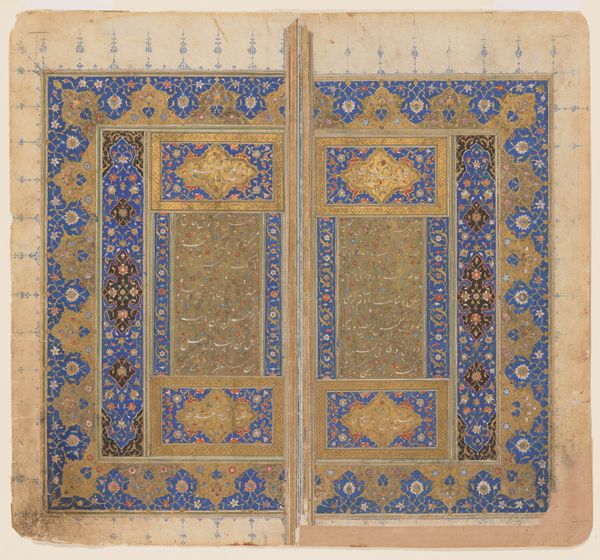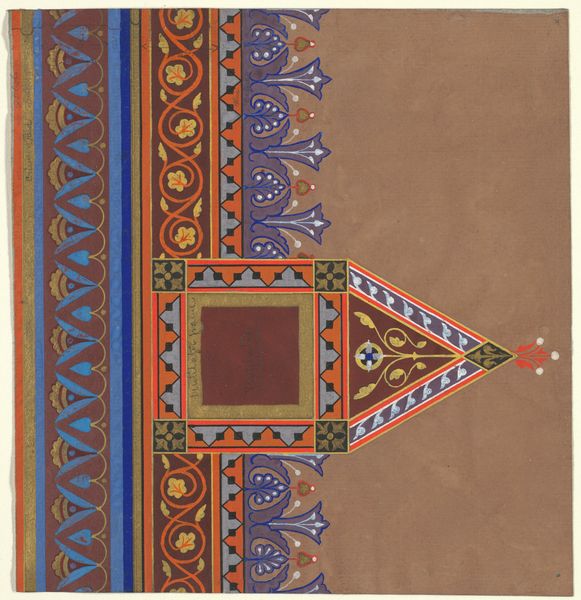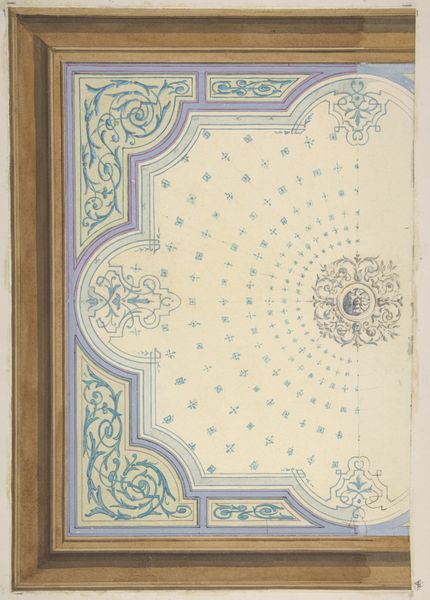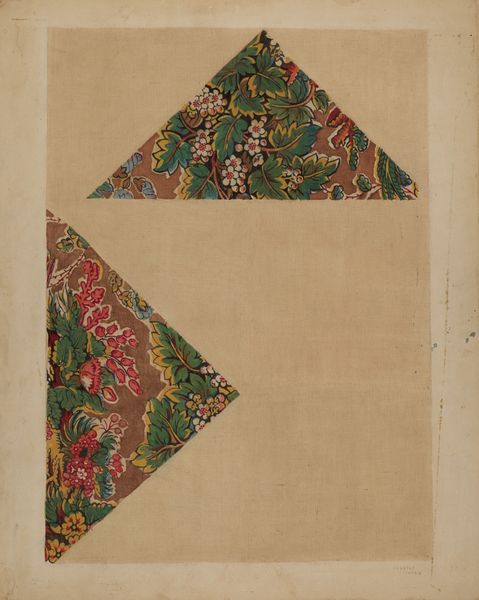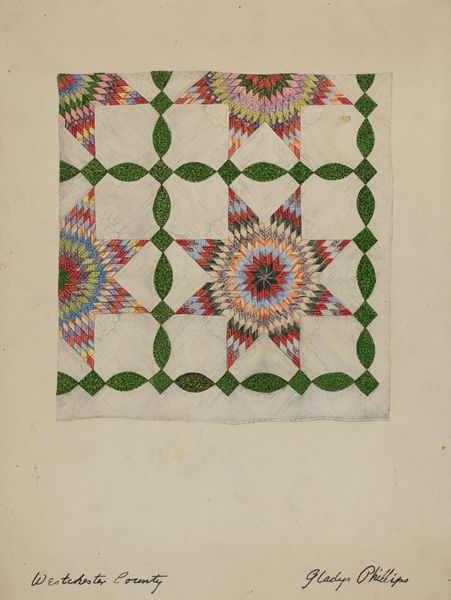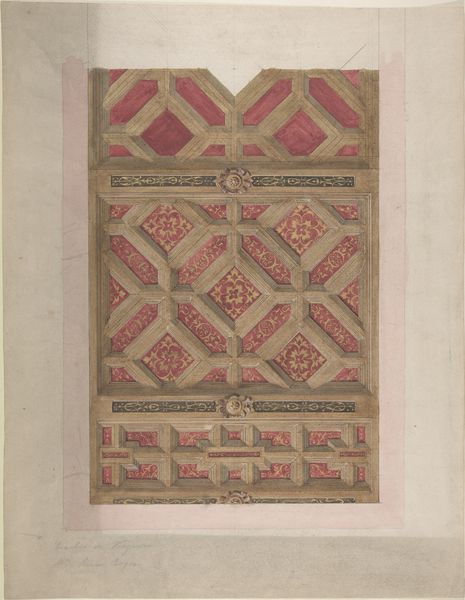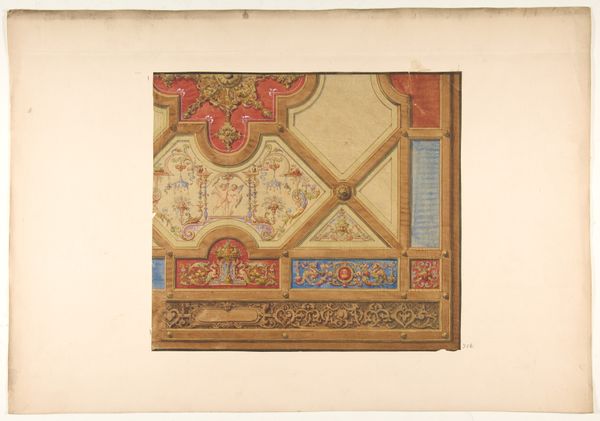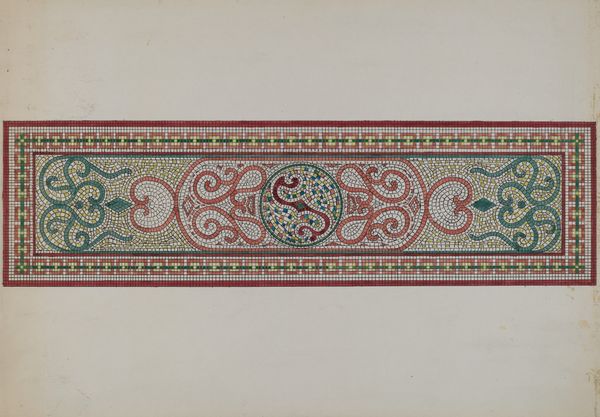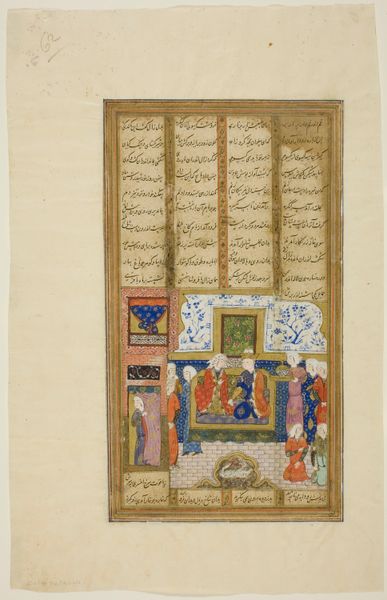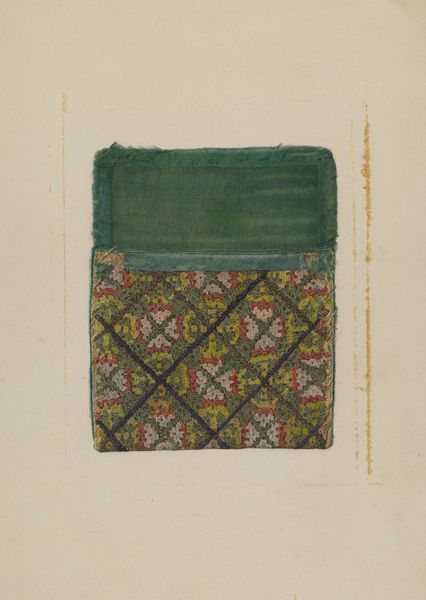
Design for the painted decoration of panels 1845 - 1900
0:00
0:00
drawing, print, watercolor
#
drawing
#
water colours
# print
#
watercolor
#
decorative-art
Dimensions: sheet: 14 5/8 x 10 11/16 in. (37.1 x 27.2 cm)
Copyright: Public Domain
Curator: Welcome. Here we have a drawing entitled “Design for the painted decoration of panels” by Jules-Edmond-Charles Lachaise. The artwork’s precise creation date remains a bit of a range, residing somewhere between 1845 and 1900. Editor: My immediate impression is that these panel designs present two contrasting moods—the panel on the left seems regal, perhaps a bit austere, while the one on the right evokes a sense of playful lightness. Curator: An interesting interpretation! Let's examine the formal structure a bit. Note the precise, repeating patterns—on the left, we have what appear to be stylized crosses alternating with encircled motifs. These patterns are enclosed by intricate borders, the use of color in the grid layout shows the symmetry creating a visually balanced composition. Editor: Right. And each cross could certainly be interpreted as a symbol of faith, power, and authority within a specific historical or cultural context. The circle motif might be some family crest—signaling noble lineage, perhaps even divine mandate. These patterns are symbolic of status. Curator: Undoubtedly, though, it is crucial to observe how Lachaise renders the relationship between figure and ground, color and texture. I find that the color palette used, a range of pink and blue washes against golden foil, is striking for such a design from the period. The arrangement creates tension that might symbolize deeper cultural ambivalence. Editor: Ah, but consider how such a palette could have functioned! The choice of light blues and reds, coupled with gold leaf, suggests an aspiration towards grandeur. These weren't merely designs, they were carefully thought-out signifiers for the status, prestige, or aesthetic taste of those who commissioned and displayed it. Curator: Fascinating how different modes of visual thinking lead to such rich interpretations. Considering its location at the Met, the design’s cultural origins could suggest a tension with European and American industrialism by embracing intricate handcraftsmanship. Editor: The drawing offers a visual memory from 19th century life! Exploring those aesthetic codes deepens the narratives of artwork interpretation, ensuring it carries significance beyond its initial artistic gesture. Curator: Indeed. These aesthetic preferences demonstrate just how relevant art history remains in navigating historical contexts and cultural codes.
Comments
No comments
Be the first to comment and join the conversation on the ultimate creative platform.
